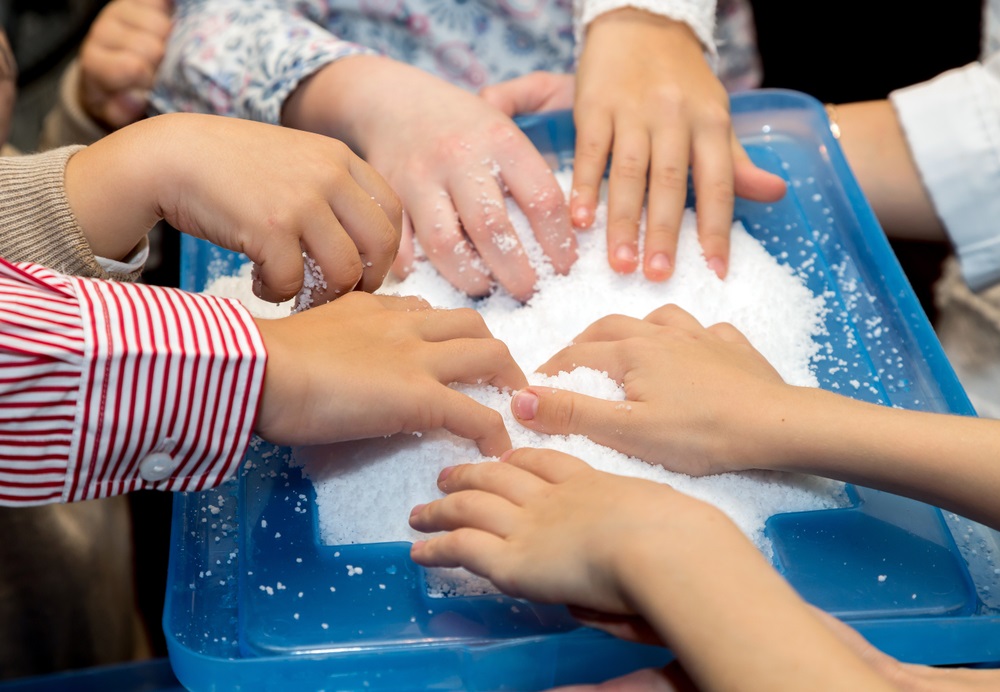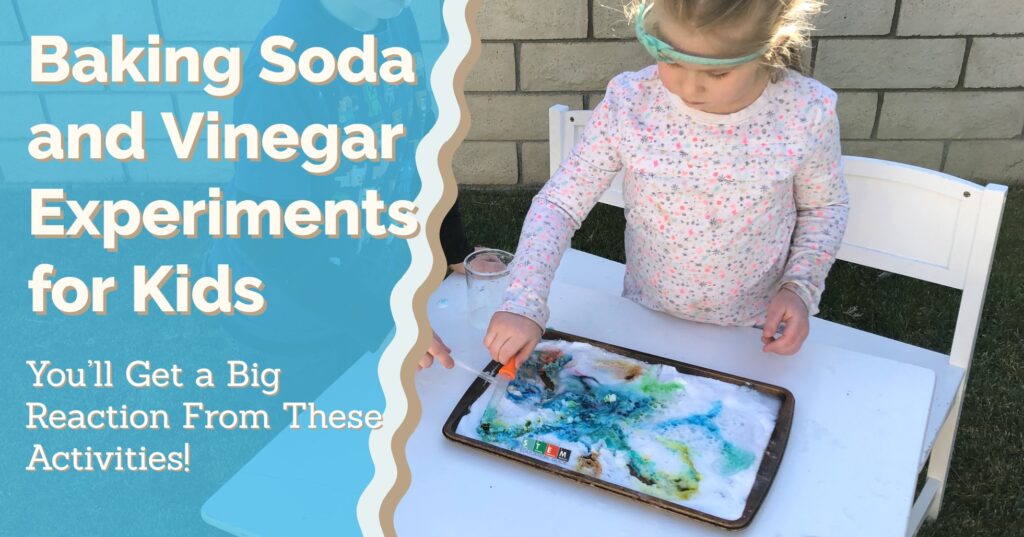With Christmas just around the corner, holiday-themed science experiments are a wonderful way to get kids excited about the holidays and include a science lesson as well.
These Christmas science experiments are geared towards getting children in a festive mood while appreciating the fundamentals of chemistry and physics.
Table of Contents
Fun Christmas Science Experiments

These activities are easy to do, fun, and will not consume a great deal of time. Materials from Christmas past (or present) can be used to create these fun activities that will teach your kids Christmas STEM skills all season long.
1. Sensory Christmas Tub
- Age: 5+
- Time: 10 minutes
- Difficulty: Easy
Create a sensory Christmas tub to engage all five senses. You can include cinnamon sticks, bells, candy cane, and almost anything festive to this tub that reminds you of Christmas. When you are done, it can make a wonderful gift, or something that your kids can enjoy over the holidays.
Materials:
- Green and red pom poms
- Pretend candy cane
- Rice
- Foam stars
- Other child-friendly items you want to include
- Food coloring
- Shallow garden tray or tub
- Peppermint oil (optional)
- Green glitter (optional)
To place an educational spin on this experiment, add Christmas-oriented science vocabulary on the foam rectangles or on note cards.
Instructions:
- Dye rice green by using food coloring. Just stir it through the rice. Alcohol hand gel can be squirted into the mixture to aid in drying. Spread it on a baking sheet to dry overnight. Green glitter or peppermint oil can also be added to make it more festive.
- Place the green rice on the bottom of the tub.
- Add the pom poms, branches of a Christmas tree, a candy cane, or any other festive item to the box.
- Children can now use this as a sensory box.
Another twist on this is to have a mini-Christmas tree that the children can decorate with the items found in the box. This gives them hours of play. You can also blindfold them and have them guess what items are in the box by using their senses.
You can also do both for added enjoyment!
Do you want your kids to be excited about science? These Fun & Easy Baking Soda and Vinegar Experiments are sure to blow their minds!
2. Sleigh Races
- Age: Elementary school
- Time: 5 minutes
- Difficulty: Easy
Your children will be off to the races in these Christmas-inspired Lego cars! Teach your children physics and the laws of motion with this experiment.
Materials:
- Markers
- Lego Car Base
- Cardboard (ramp)
- Tape
- Red Card Stock
- Red, rectangular box
- Bells (optional)
Instructions:
- Build a ramp using cardboard and cover it with white paper. The white paper will represent snow. Cotton balls or simply cotton can be added to the sides to act as a “bumper” to prevent the cars from falling off the track.
- Using red card stock, cut out two sleigh shapes. This will be used on each side of the Lego Base.
- Cut two small rectangles. Attach it to the sleigh pieces to form the top of the sleigh.
- Glue the sleigh to the red, rectangular box.
- Tape it using clear wrapping tape to the Lego car base.
- Now your child can race the sleighs!
You can position the sleighs slightly to the back, front, or middle of the Lego car base to further demonstrate kinetic energy. You can time each trial. Your child can see which will reach the end first and can hypothesize as to why that occurs.
Change the height of the ramp and observe what happens. Then, you can try racing the sleighs without wheels to demonstrate the effects of friction.
Children love this experiment, and it provides hours of learning fun.
3. Fizzy Christmas Tree
- Age: Elementary school
- Time: 10 minutes
- Difficulty: Moderate
Fizzing Christmas trees are fun and easy to do. This involves a creative spin on an old science experiment to add that holiday “flavor” to it.
Materials:
- Baking soda
- Vinegar
- Paper plates to create a cone shape
- Sequins
- Water
- Food coloring
- Spoon, bowl, or tray you can place in the freezer
- Baster, eyedropper, or squirt bottle
Instructions:
- You are creating a moldable baking soda mixture. Only add enough water so the baking soda can be packed together but not be gooey, either. It should mold into a form easily. You can add glitter to it for a more festive appeal.
- The mixture should easily pack and not be soupy. This will affect the fizz.
- Use a paper plate folded in a cylindrical shape to mold the Christmas tree. Snowcone wrapper works well too.
- Pack the mixture into cone shapes. A small toy or figure can be hidden inside as well for some early (or late) Christmas fun.
- Freeze the cylindrical mixture for a few hours, or you can make it the previous day. The more frozen the cones are, the longer they take to melt.
- When they are completely frozen, remove the paper wrapper. You can leave them out for a while if needed, but this will affect the experiment.
- Place a bowl of vinegar on the table. Using a baster, eyedropper, etc., take some vinegar and squirt it over top of the tree. Then, watch the tree melt.
- If you need to quicken the process, add hot water to vinegar.
Kids will love watching the tree melt- especially if there is a small toy hidden inside!
While your child is watching the tree disappear, you can explain to them the science behind the experiment. Vinegar is an acid, while baking soda is a base. When combined, a gas is produced called carbon dioxide. Children can see, feel, smell, and hear the tree dissolve and witness the chemical reaction. This works with citrus fruits, too.
These are three fun Christmas science experiments that you can do to get your kids into that holiday spirit. Some are fun, wherein they get to watch a chemical reaction and have a toy at the end. Others are great demonstrations of the principles of physics.
Whatever Christmas activity you choose, your children will have fun for hours. Plus, they will get to learn about science and STEM as well.
Wrapping Up
In conclusion, these Christmas science experiments for kids are a fun and educational way to get into the holiday spirit. Kids will be thrilled to learn something new while having an absolute blast. From making crafts to creating a chemical reaction, each experiment is sure to engage children and encourage them to think outside the box.
You can rest assured that their little ones will have a blast this holiday season as they explore and discover the wonders of science. So go forth and have your festive science adventure with your family!
Do you want some more chemical reactions? Please join us in our article, Homemade Chemistry – Household Chemical Reaction Experiments for Kids!










